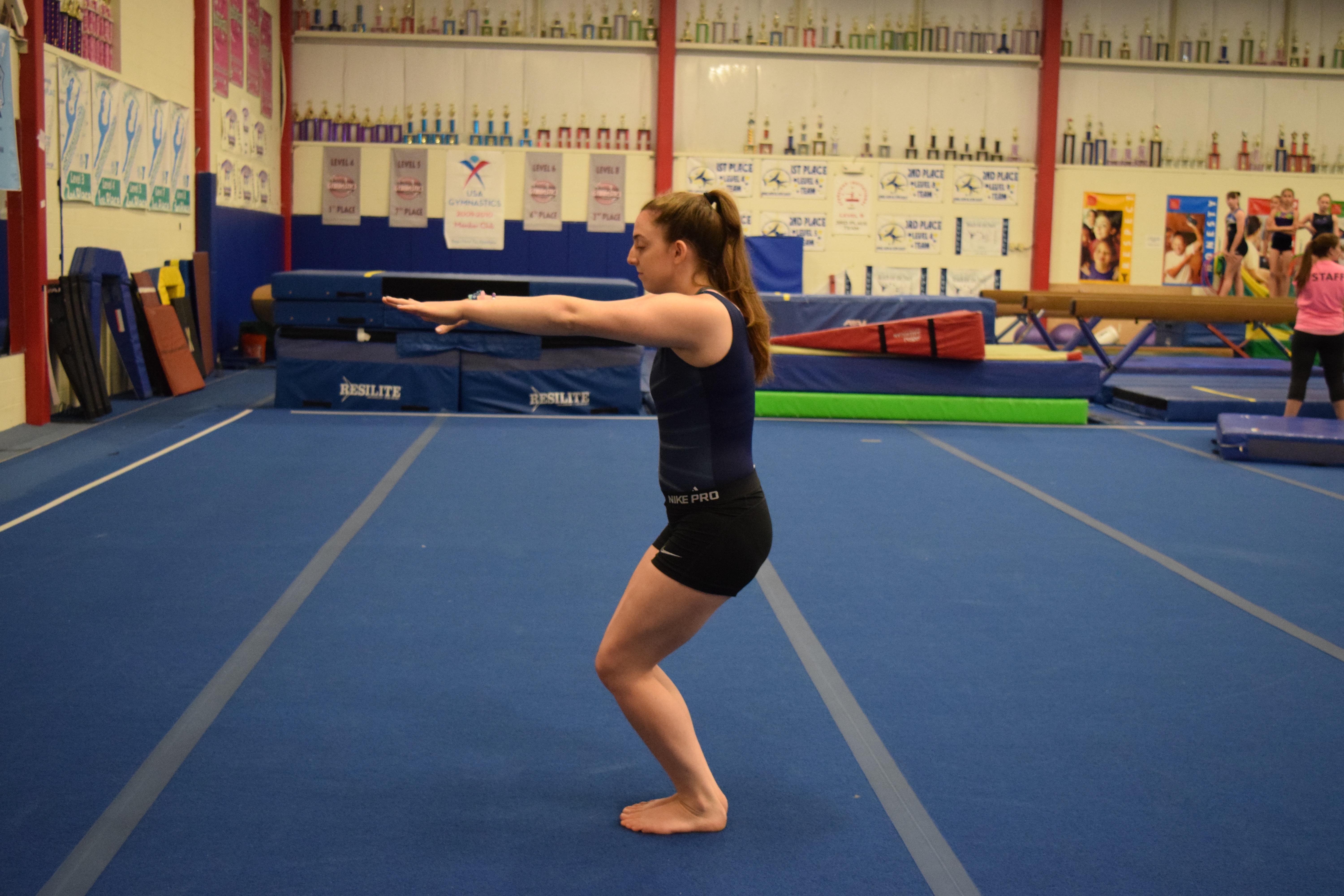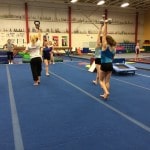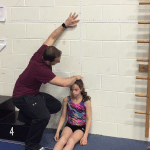Why Gymnasts Must Change How They Land
The topic of how a gymnast should land continues to be controversial for many coaches, gymnasts, and judges. I’m not the first person to bring this up, as my good friend Dr. Josh Eldridge as well as Rick McCharles have written on this up before. I’m just going to weigh in my opinion on the matter.
Before I share more, remember that I recently released an entire e-book on Gymnastics Injuries, and another on Gymnastics Strength and Conditoning, that you can download here.

Table of Contents
The Gymnastics Medical Injuries Guide
- Understand the most common injuries in male and female gymnastics, why they occur, and how to prevent them
- Read about the most current science on injuries and rehabilitation in gymnastics
- Get tips on the latest injury risk reduction and rehabilitation practices
We take our privacy seriously and will never share your information. Click here to read our full privacy policy.
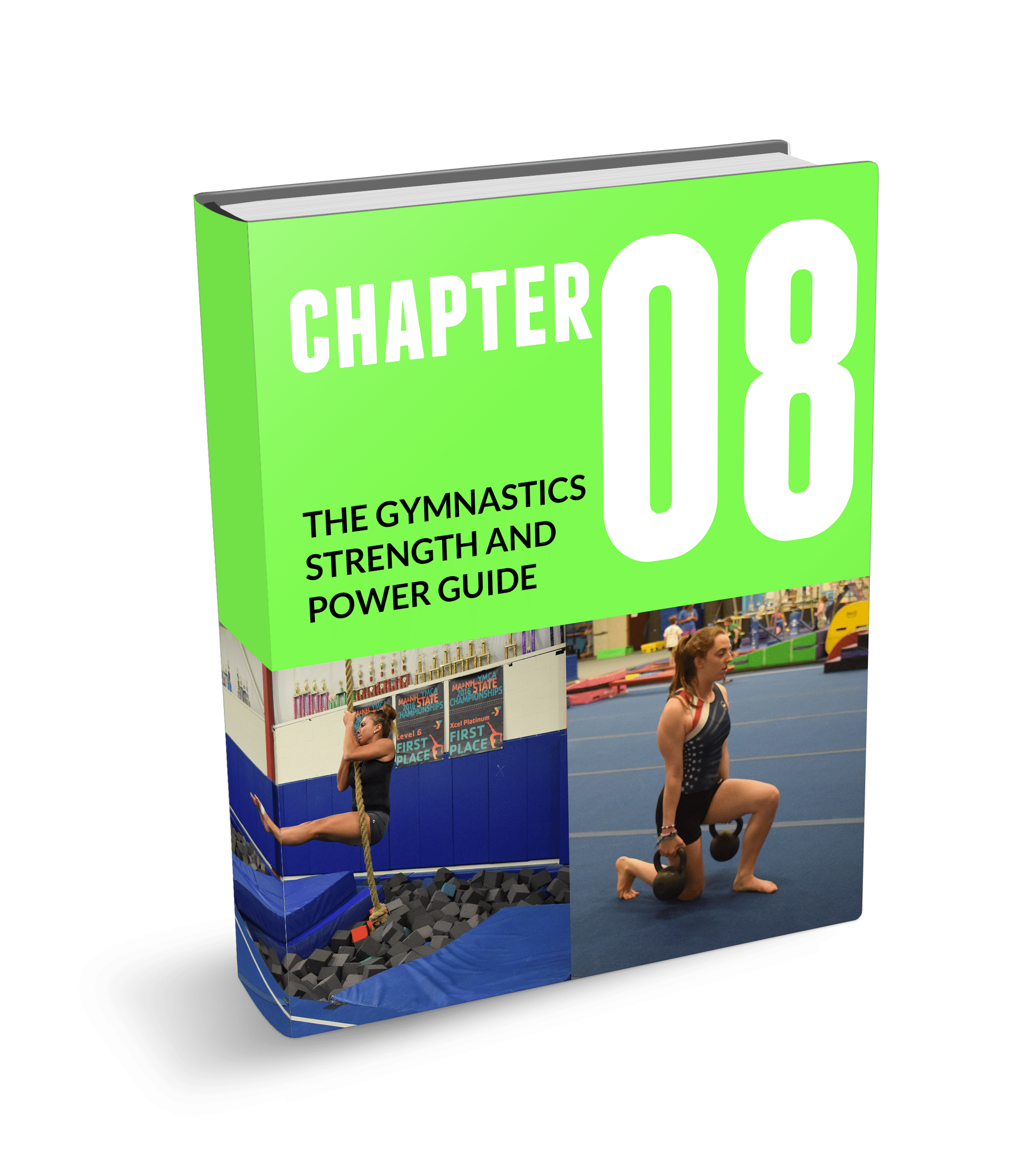
The Gymnastics Strength
and Power Guide
- Methods and exercises for increasing strength and power in gymnasts
- Explanations on why gymnasts should use both weight lifting and body weight strength
- Teaches concepts of planning, specific sets or reps, and planning for the competitive year
We take our privacy seriously and will never share your information. Click here to read our full privacy policy.
I feel the unfortunate reality is that the typical way gymnasts were taught to land growing up (me included) may not be the safest for them and most effective to stick skills. Not to mention coaches are also unfortunately very mis-informed about what the best available science suggests for proper landing mechanics. The concerning typical landing position that we need to move away from is one of
- Knees and feet together
- Glutes engage with the “hips tucked under” into hollow
- Knee dominant landing strategy
- Stiff impact with upright torso
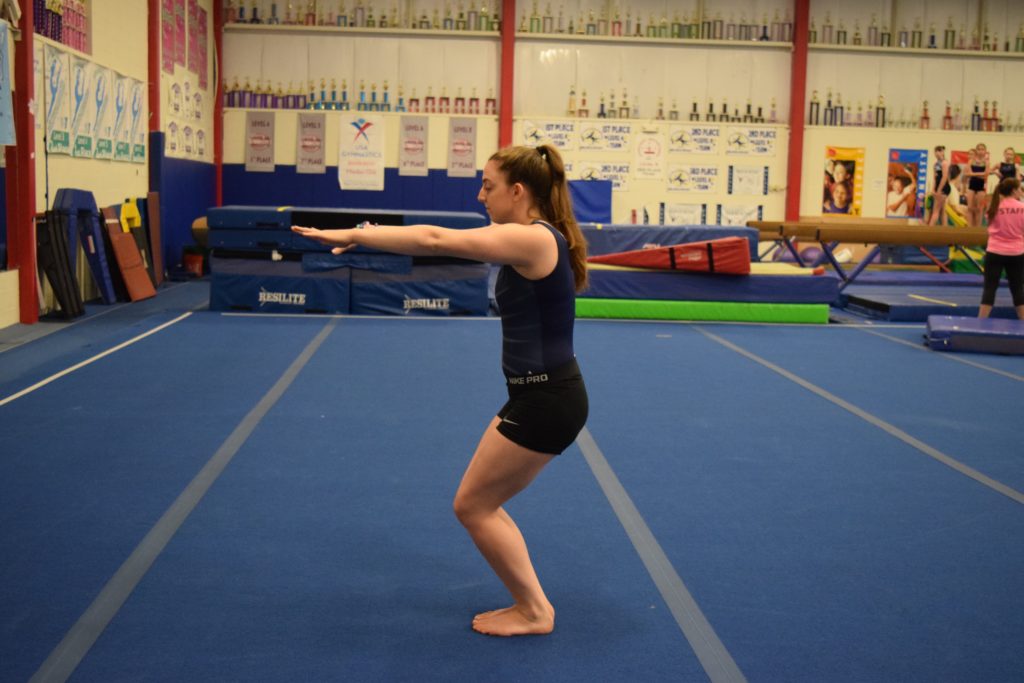

Across the country in gyms, online in training videos, and at congress presentations I continue to see gymnasts landing in a way that is very concerning and worse I continue to see coaches yelling at their athletes to “tuck your hips under, feet together, and use your knees” saying they are not landing right. Not to mention, I see hundreds of gymnasts doing strength and conditioning including loaded squats, box jumps, and single leg squats with extremely concerning form. The reality of the situation is that we need to change the way gymnasts land, starting from a very young age. The more ideal landing we should be teaching and forcing athletes to use is
- Feet hip width apart
- toes, knees, hips, and shoulders close to inline (generally)
- core engaged in relative neutral (not excessively hollowed or arched)
- proper angular displacement of the hip and knee joints
- hip angle generally 30 degrees, and trunk / tibial lines close to parallel
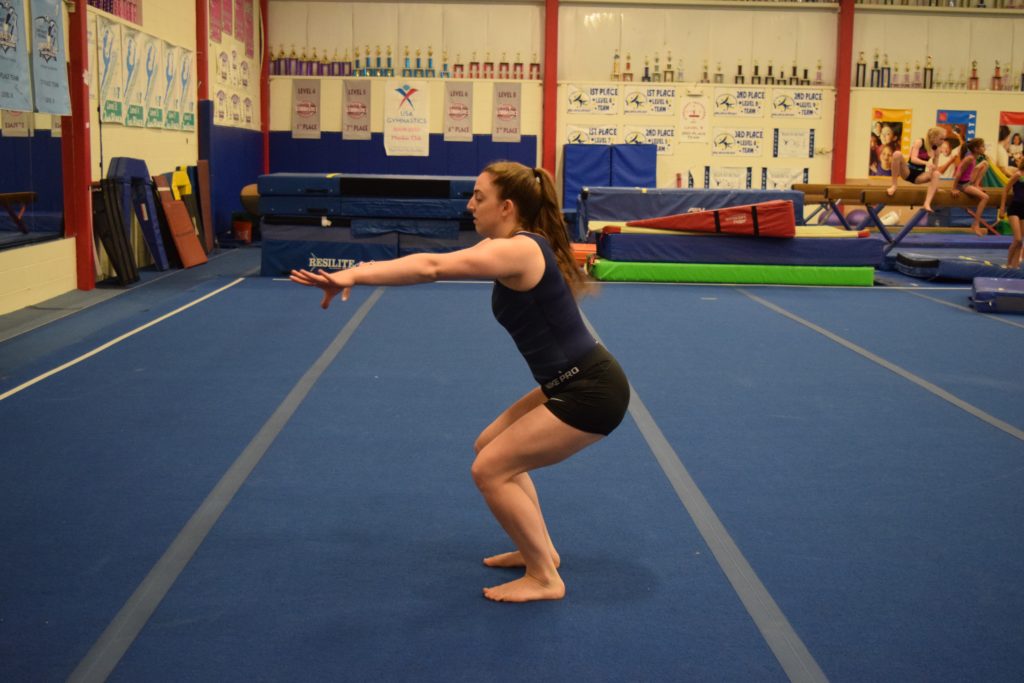
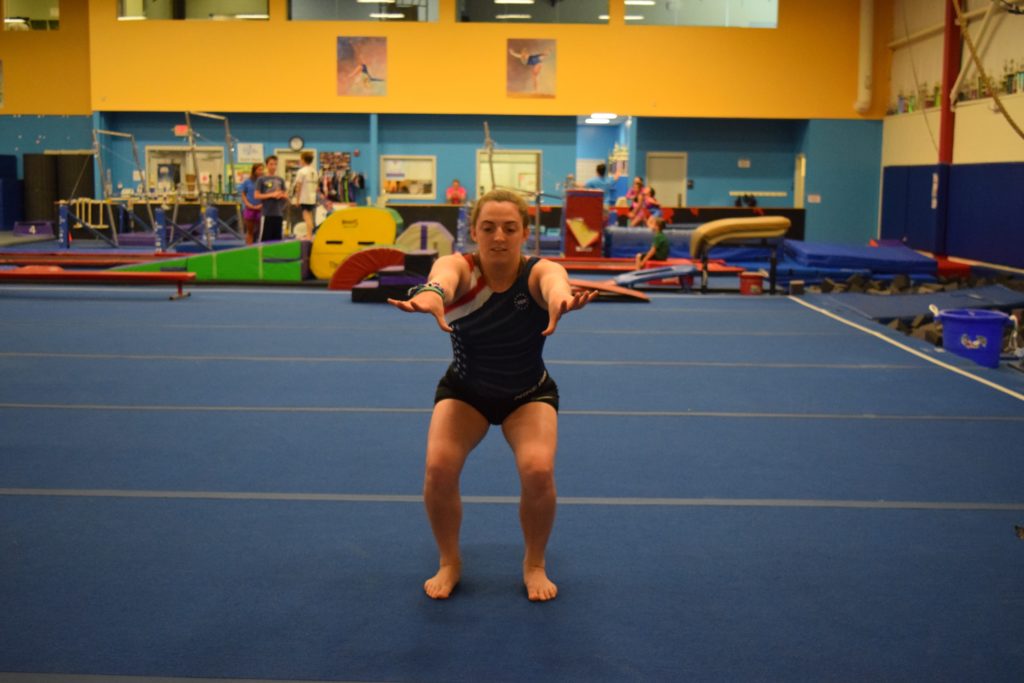
The main reason for this is the growing concern for significant injuries like ACL tears, patellar tendinopathy, Osgood Schlatters Disease, anterior impact based ankle pain, Achilles injuries, and Sever’s Disease. If you would like to read up on some more research related to this, you can check out the articles here, here, here, here, and here. Remember Dr. Sand’s work has suggested the forces acting on the gymnast can be as high as 17x body weight, and gymnasts take likely thousands of impact reps over a month of training and competitive season. It is due to this that we must stress proper landing mechanics from a young age, to make sure they not only know how to control the forces but also have sound motor patterns that are built. This way, when they mature to weigh more and start doing much higher level skills, they will continue to safely land.
Why A More Squat Based Landing is Safer and Better For Sticking
Along with injury based aspects, the traditionally taught gymnastics landing style is also less effective to stick skills. During the more ideal pattern noted above the glutes and other hip musculature can more optimally control the forces eccentrically during landings. A perfect example is this Instagram post I put up following Simone Biles sticking her Amanar at worlds. Note the fantastic squat position. She also has very strong legs, but that chat is for another time. If it’s good enough for her, I think it’s probably good for everyone. There are many, many other cases I could included for generally sticking more times with a squat versus being forced to take steps when feet together and hips are tucked under. There will always be outliers, but this seems to be the general trend.
Flip Shape vs Landing Position
One common issue that comes up with gymnasts I treat or when we teach seminars is that of “flipping shape” versus “landing position”. Coaches and athletes have to understand that the ideal flip shape for tight double backs or regular front tucks is not necessarily the best way to land and dissipate high force. Take these videos for example. One of our level 6 athletes had some serious issues in landing her front tuck pass, and also sometimes complained of back pain when she landed a lot this way. I had her do it on Tumble Trak after seeing it on the floor.
As you can see she lands in a typical gymnastics flip shape. This is what we want to avoid due to the points above. I then had her do a squat jump and land a few times, then try to do a front tuck and mimic the proper squat position. Given her feet are a bit too wide, you can see it helped her landing position and also she reported it was much more comfortable.
This is just one example of a simple front tuck, but think about high force double pike, huge high bar dismount, or yurchenko full landings, done over thousands of reps through a yearly season. It adds up quick on a growing, skeletally immature athlete who may not have gone through the growth process for leg / torso strength yet.
.
Concluding Thoughts
Now I am quite aware that gymnasts all have different anatomy that will make their squat different from one athlete to another, that there may not be a “perfect” way to land, and that there are an infinite amount of movement variables related to motor variability that will almost never make the gymnast be able to land in this ideal manner.
What I’m trying to explain is that we want the athletes to use more of a hip and muscular dominant strategy that will more ideally dissipate the high forces through angular displacement. Ideally we want to shift the stress away from the passive ligamentous and bony structures to more muscular and active based structures across the entire kinetic chain. I feel this is crucial to make dents in both the overuse and acute injury rates that sadly very high in gymnastics.
I know many coaches get concerned about score deductions, but from what I have read/heard from national judges and elite coaches it is that feet hip is allowed as long as it is a reasonable distance. Beam is one situation where we clearly don’t want “feet hip-width apart”, but the athlete can still use hip based strategies for their dismounts. I also know that connected bounding tumbling is completely different technically than absorbing a high force skill/dismount, and there will be large differences in landing technique here.
There will also inevitably be short and off landings we can’t avoid, but for me I think this is where the role of a well designed and periodized strength program comes into play. I think there is a way to properly prepare tissues for low landings, and I certainly think lower extremity joints should have the capacity to handle varying force angles, but in general I feel we need to utilize proper squatting form in the very high load gymnastics skill scenarios.
I can tell you that for almost every gymnast I work with in the clinic showing lower back or lower extremity injury, I teach them how to land correctly using a proper glute/hip based squat pattern. I have found in many gymnasts this is often one big key to getting their injury to calm down, and safely get them back to training. I know this may stir the pot up a little bit, but I think this is a key concept gymnastics adapts to change. Hope this was helpful,
– Dave Tilley DPT, SCS

